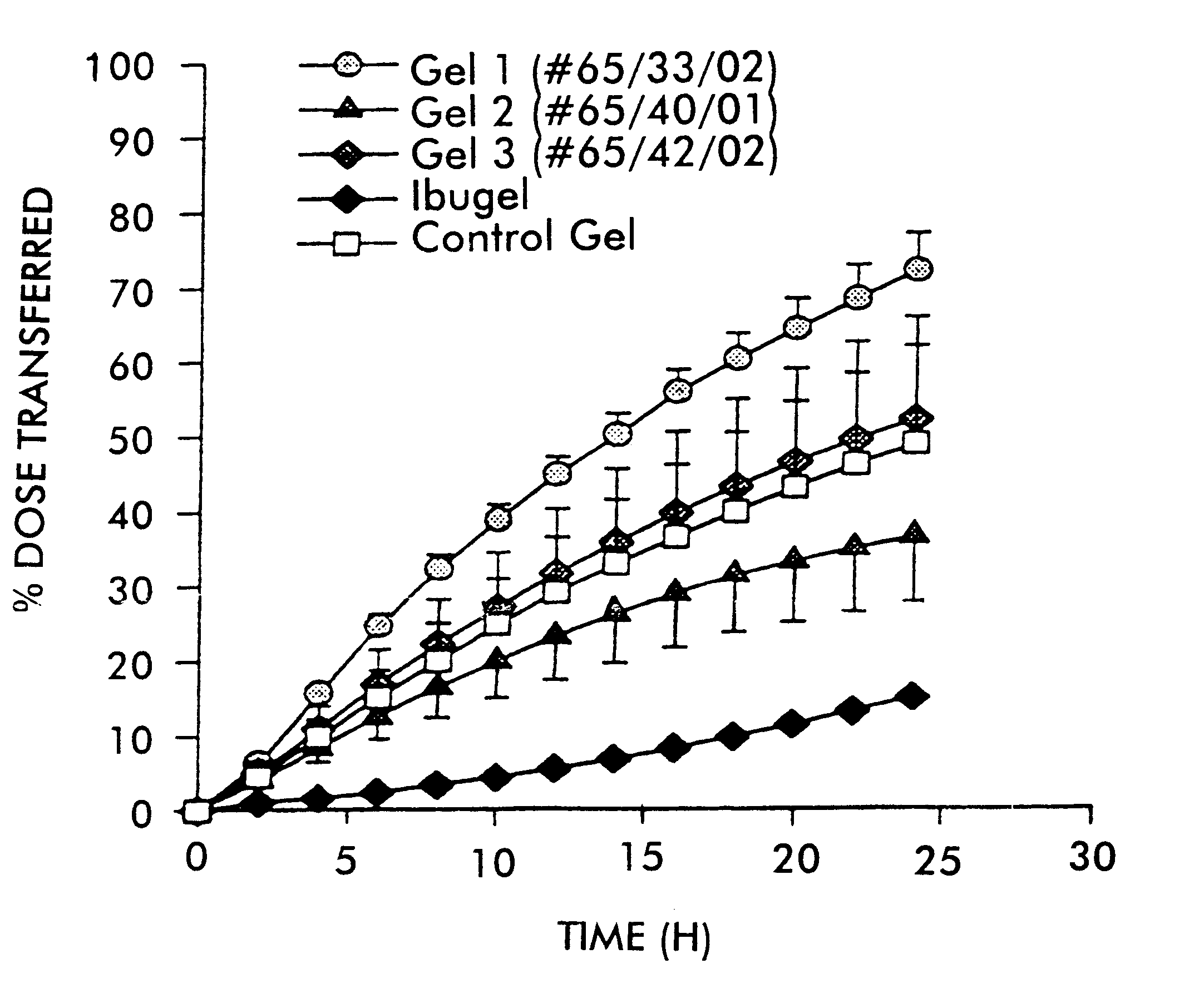Percutaneous delivery system
a technology of percutaneous delivery and adhesive patch, which is applied in the direction of bandages, antibacterial agents, drug compositions, etc., can solve the problems of adhesive patch adverse skin reaction in about 30% of individuals, adhesive is responsible for about 30% of individuals' adverse skin reaction, and the wearer of adhesive patch is aware of its presence, so as to reduce the rate of release, increase the release rate of active, and improve the effect of substantivity
- Summary
- Abstract
- Description
- Claims
- Application Information
AI Technical Summary
Benefits of technology
Problems solved by technology
Method used
Image
Examples
example a
A composition in accordance with the invention was prepared by combining the following components in a stirred vessel at ambient temperature:
The composition formed was in the form of a clear solution. When applied to the skin and spread out on the skin surface formed a substantially clear thin film.
example b
EXAMPLE C
In Vitro Diffusion Measurements
Shed Snake Skin.
The Children's Python shed snake skin was obtained during natural shedding and the dorsal skin was used. Shed snake skin has shown to be a suitable model membrane for human skin by Itoh, et al., Use of Shed Snake Skin as a Model Membrane for In Vitro Percutaneous Penetration Studies: Comparison with Human Skin Pharm. Res., 7 (10), 1042-1047, 1990; and Rigg, et al; Shed Snake Skin and Hairless Mousse Skin as Model Membranes for Human Skin During Permeation Studies, J. Invest. Dermatol., 94; 235-240, 1990.
Method of Conducting In-Vitro Skin Diffusion Experiments in Horizontal Diffusion Cells
A modified stainless steel flow-through diffusion cell assembly based on that first shown by Cooper in J. Pharm. Sci. 73, 1984, was used to perform the experiments on diffusion of the drugs from various donor compositions through snake skin.
Topical formulations are weighed out onto the skin substrate which has an area of 0.79 cm.sup.2. Active s...
example 1
The in vitro diffusion cell method described above was used to demonstrate that ibuprofen penetrates through skin using this system. The formulations tested are described in the table below.
Samples were assayed as per the method described earlier.
The detection wavelength was 210 nm and the mobile phase consisted of 60% acetonitrile, 0.1% H.sub.3 PO.sub.4, pH=3 adjusted with NaOH.
FIG. 1 shows the plot of percent dose transferred versus time for the respective formulations. Error bars represent the standard error of the mean.
PUM
| Property | Measurement | Unit |
|---|---|---|
| area | aaaaa | aaaaa |
| temperature | aaaaa | aaaaa |
| pH | aaaaa | aaaaa |
Abstract
Description
Claims
Application Information
 Login to View More
Login to View More - R&D
- Intellectual Property
- Life Sciences
- Materials
- Tech Scout
- Unparalleled Data Quality
- Higher Quality Content
- 60% Fewer Hallucinations
Browse by: Latest US Patents, China's latest patents, Technical Efficacy Thesaurus, Application Domain, Technology Topic, Popular Technical Reports.
© 2025 PatSnap. All rights reserved.Legal|Privacy policy|Modern Slavery Act Transparency Statement|Sitemap|About US| Contact US: help@patsnap.com



